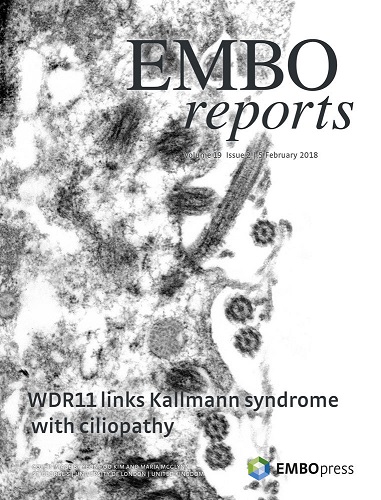Meet the researcher: Dr Soo-Hyun Kim
Published: 11 February 2020
What is your main area of focus?
My research is mostly focused on puberty-related diseases affecting reproduction and fertility. I work closely with patient-facing clinicians who send me genetic data, which I then analyse to understand how genes cause diseases, and how they affect disease presentation.
I’m fundamentally a developmental cell biologist, looking at how organisms grow and develop from only a few cells. So, my interests lie in the earliest stages of embryos, but it has implications for diseases further down the line in adolescence and adulthood. And then hopefully we can use this knowledge to help people with infertility problems.
What has your research uncovered?
Kallmann syndrome is a disorder which prevents people from starting or fully completing puberty. Initially the disease was considered to be just a sex hormone deficiency, but our work has shown that it’s more than just hormone defects. Through our collaboration with researchers in the US and UK, we’ve found key developmental signalling pathways altered in this disease.
Our investigations in animal models revealed that the disease affects the formation of cilia (pronounced sil-ee-uh), which are little hair-like protrusions on cells involved in many different bodily functions. In fact, Kallmann syndrome mutations cause a shortening or loss of cilia, known as ciliopathy. This has redefined the disease as we know it, from a hormone deficiency to a developmental disorder impacting on the entire body.
What will this mean for people with Kallmann syndrome?
So far, we have only proven one gene’s link to the disorder and ciliopathy, but my immediate interest is to find out if there are any other known Kallmann syndrome genes that are related to ciliopathy that we don’t know about. This will help us to diagnose patients more accurately, based on their genetics.
This will significantly affect treatment. Some patients with Kallmann syndrome are not responsive to hormone therapy, which is the current standard of care. Now we know that it’s not just a hormone problem, it’s clear that this isn’t the only way to treat the condition. Hopefully personalised treatments could be developed, alongside genetic counselling, to make sure patients are well looked after.

Your paper on Kallmann syndrome was selected as the cover story for EMBO reports, what did this mean to you?
It was great to be asked to have my paper as the cover story. The graphic design part of the process was particularly interesting. The study was one of the top 20 most downloaded papers of 2018, and since then I’ve been contacted by researchers from institutions in China, Japan and the USA about my work. These new collaborations have given me access to new data and helped me to plan the second stage of the study, which is now ongoing.
Being published as a cover story was a great experience, and I’m really pleased with the impact this has had on sharing the paper more widely.
Image source: EMBO Reports, Volume 19, Issue 2, February 2018
Today’s the International Day of Women and Girls in Science. Have you noticed any changes in the attitudes towards women in research since your career began?
When I was growing up as a young girl in South Korea, I would see female doctors and professors around me, but women had fewer career options than men in general. My parents always encouraged me to pursue academic and professional careers and were happy to support my education but would have preferred it if I were a medical doctor.
During the last couple of decades, there has been a significant increase of women in science, especially in biological research. This is encouraging but there are still more women in supportive roles such as lab technicians. There are more public awareness initiatives promoting gender equality in science now, and many successful women scientists can influence girls in school. But, mothers at home can have an even bigger influence on their daughters and how they view their values in the world. More mothers should be encouraged to have careers and become role models themselves.
What challenges have you faced as a woman in science?
The period of childbearing age in woman is now partly protected by different funding schemes allowing career breaks. But, when it comes later stages and the menopause, which is less clearly defined, there is no support.
The menopause is viewed as a normal process for women and we are expected to endure it in silence until it “passes”. However, because it often overlaps with a critical point in mid-career progression, I think women face additional challenges than men of a similar age in reaching a higher position. My research happens to be focused on the reproductive ageing and infertility, so I feel passionate about these issues and there should be more openness to talk about healthy ageing in women.
What are your interests outside of work?
I’ve always been interested in painting and art. When I was at university I used to run a painting club. I haven’t really managed to continue that much, but I’ve always enjoyed going to exhibitions and shows. I go to the Tate Modern and Royal Society a lot, and I make use of my membership to the different galleries. I travel a lot and when I have a chance to go, I always make a point to go to museums in that city.